| Columns Retired Columns & Blogs |
Hi Michael
I notice you are using both products as digital sources. Which do you prefer?
Scott
I measured the Boulder 2110's electrical performance with my Audio Precision SYS2722 system (see www.ap.com and the January 2008 "As We See It"). As set up for the review, the volume control operated in accurate 0.5dB steps, the 2110 preserved absolute polarity (ie, was non-inverting, with pin 2 of the XLR jacks hot), and its maximum gain was exactly 20dB, as specified, for both the balanced and unbalanced inputs. The input impedance was very high, at an estimated 170k ohms (the specification states 333k ohms, but the voltage-drop method I use is not accurate for impedances greater than 100k ohms), and the balanced output impedance was 100 ohms, as specified.
The top pair of traces in fig.1 shows the Boulder's frequency response into 100k ohms, the bottom pair into 600 ohms. In both cases the audioband response is perfectly flat, and has rolled off by only 1.5dB at the 200kHz limit of this measurement. This graph was taken with the 2110's volume control set to its maximum; the frequency response didn't change at different settings of the control. Crosstalk between the left and right channels was essentially unmeasurable, while the noise floor was free from any power-supply–induced spuriae (fig.2), even though I had the preamp chassis sitting atop its power supply during the measurements. The actual signal/noise ratios, ref. 1V output voltage into 100k ohms with the volume control set to its maximum, were 83.1dB (wideband, unweighted), 95.8dB (22Hz–22kHz, unweighted), and 98.5dB (A-weighted). This is a very quiet preamplifier.
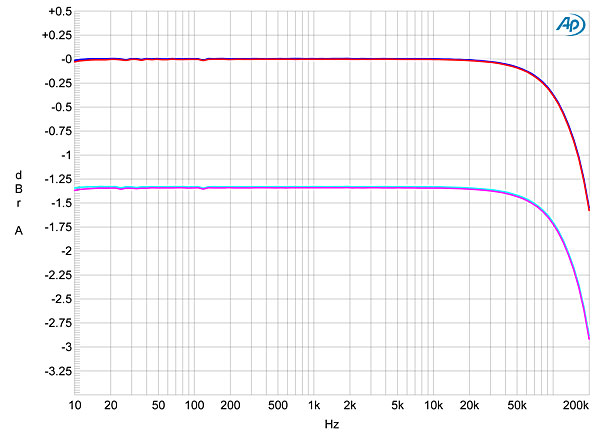
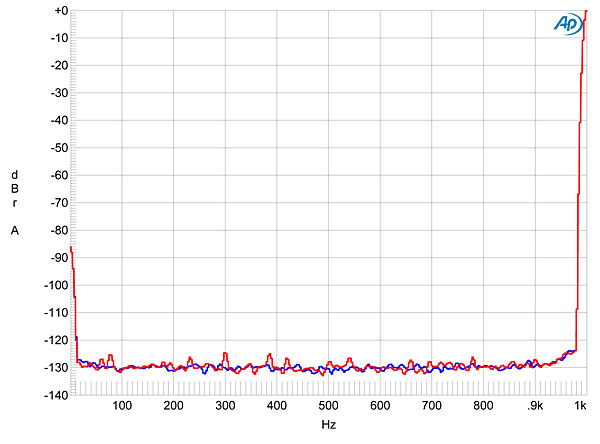
Fig.3 plots the percentage of THD+noise in the 2110's output against its balanced output voltage into 100k ohms. Clipping, defined as when the THD+N reaches 1%, doesn't occur until 32V; it was still 27V into 600 ohms! More important, the downward slope of the trace below 15V suggests that the actual distortion remains buried in the noise below that output level. (A constant amount of noise becomes a decreasing percentage of the output level as the latter rises.) I therefore plotted how the THD+N percentage changes with frequency at 15V, which I readily admit is well above the output level the Boulder will ever be asked to deliver in practical use. The result is shown in fig.4, with the 100k ohm result shown in blue and red and the 600 ohm result in cyan and magenta. The THD+N at lower frequencies is superbly low into both impedances, at <0.0004%. Though the THD does rise in the treble, reaching 0.0019% at 20kHz into 100k ohms and 0.0028% into 600 ohms, this is still very low in absolute terms.
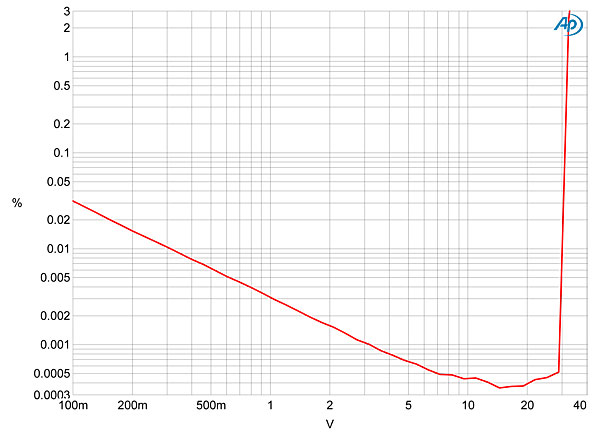
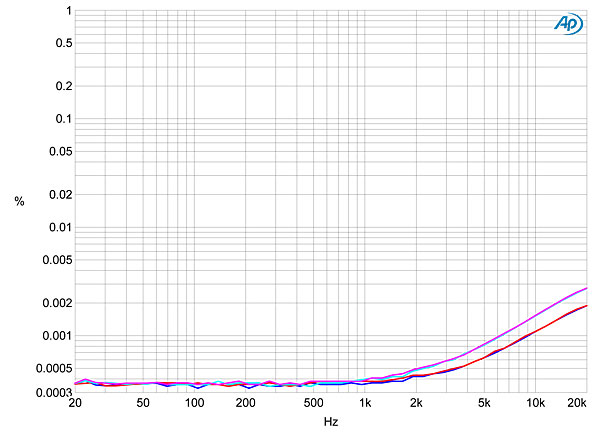
The 2110's distortion is so low, in fact, that it taxed my ability to measure it. Figs. 5 and 6 show the spectrum of the preamplifier's output with a 50Hz tone at 10V into 100k ohms with, respectively, balanced and unbalanced input signals. The only harmonics visible are the second, third, and fifth, all at or below –120dB (0.0001%)—and, as I would expect, there is a little more second harmonic with the unbalanced input. But—and this is an enormous "but"—these spectra are not very different from that of the residual distortion in the Audio Precision analyzer's signal generator (fig.7) at the output level I used to generate the spectra for the Boulder's output. (The SYS2722 had returned from the Audio Precision mothership in Oregon just prior to my testing of the 2110.)
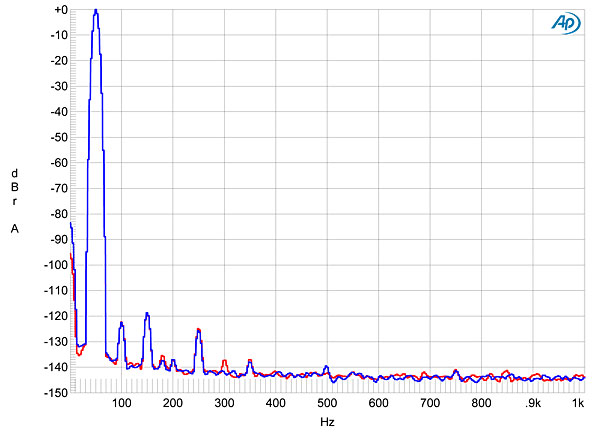
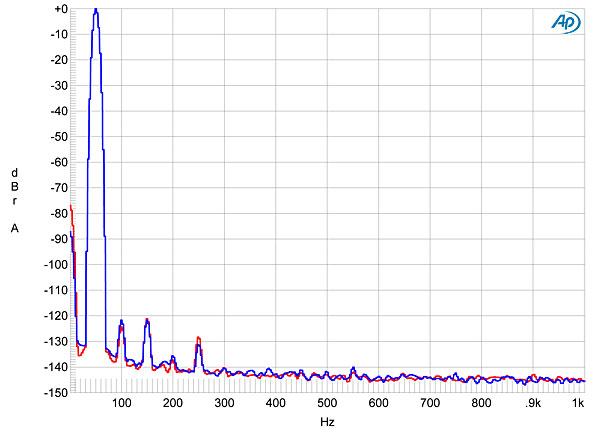
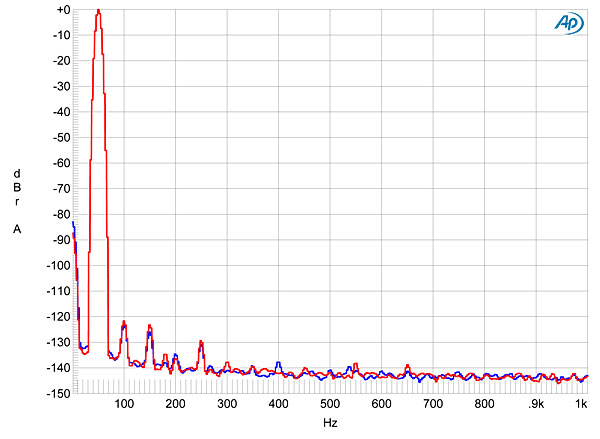
I therefore repeated the measurement used to create fig.5, this time notching out the fundamental tone so that the full resolution of the Audio Precision's A/D converter could be applied to just the THD+N. The result is shown in fig.8: only the third and fifth harmonics are visible, and by comparing this graph with a similar one taken for the SYS2722's output, it appears as if the Boulder is introducing about the same amount of third-harmonic distortion as the Audio Precision's generator, but not actually introducing any second- or fifth-harmonic distortion for frequencies below the low treble!
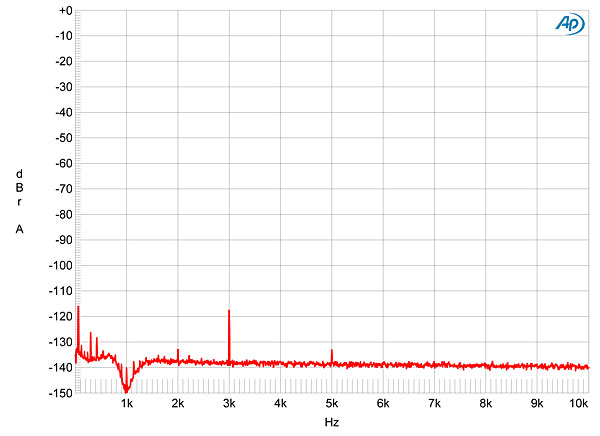
Fig.4 shows that the THD does rise toward the top of the audioband, this due to the production of some second harmonic. This can be seen in fig.9, which shows the spectrum of the 2110's balanced output while the preamp drove an equal mix of 19 and 20kHz tones into 600 ohms. The spikes at 38 and 40kHz are slightly higher than those present in the Audio Precision's output. Though the actual intermodulation products in this graph, at 18, 21, and 39kHz, are all about 10dB higher than those in the SYS2722's output, these spuriae are still all extraordinarily low in absolute terms—and there is no difference product visible at 1kHz.

Boulder's 2110 is the best-measuring preamplifier I have encountered. Not only are its distortion and noise very low, the 2110 doesn't change its operating parameters with output voltage, load impedance, or the setting of the volume control, and hardly at all with frequency. I am not surprised that Michael Fremer was impressed by what the 2110 did in his system. I just regret that I was not able to audition it in my system, the review sample having to be shipped to the 2015 Consumer Electronics Show as soon as I had finished measuring it.—John Atkinson

Hi Michael
I notice you are using both products as digital sources. Which do you prefer?
Scott